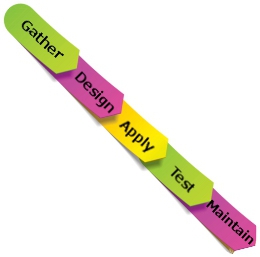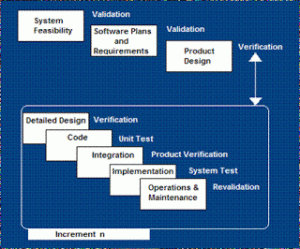This article states that functioning of process model and various process model used in software engineering .This article explain use of this model in software development life cycle (SDLC) in simple lucid language. The major and commonly used process models should be adapted for uses by a software project team. To achieve this, process technology tools have been developed which helps software development organizations to
1. Analyze current process
2. To organize their work task or activities.
3. Keep control monitor and progress
4. help to reduce development time and cost
There is different process, which are used by the software development team to do their work systematic i.e. step by step the original process models have certainly given a guideline or roadmap for the whole software development process or software engineering. These process models are properly structured so that at least structure of the process can be easily understood .The models which we are going to learn here.
THE PROCESS MODEL
There is different process, which are used by the software development team to do Their work systematic i.e. step by step the original process models have certainly given a guideline or roadmap for the whole software development process or software engineering.
These process models are properly structured so that at least structure of the process can be easily understood .The models which we are going to learn here.
1. Waterfall process model
2. Spiral process model
3. Incremental process model
4. RAD process model
THE WATERFALL MODEL
Initially there was a time when software development started the problem was well understood and the linear approach to develop the software was used. Now days there are situation when software comes with the new version and fulfills the current requirement and tries to manage the change management .It is a complicated process when understanding requirement plays very important role.
Fig 1.0 states different phases of waterfall model
The waterfall model is also called the classic life cycle; suggest a systematic sequential approach to software development. The processing of waterfall model begins with customer specification of requirement and progress through different activities like planning, modeling, construction and deployment which ends in development completion of quality software product. The oldest model for software engineering is the waterfall model which is also called as oldest paradigm for software engineering .From last 2 decades there is criticism on this model even by its supporter about efficiency.
Certain problems that are faced during implementation of Waterfall Model:
1. Practically it is impossible for real projects rarely to follow the sequential flow of this model. This linear model can do iteration and that to indirectly .The result of this is that the changes can cause uncertainty or confusion as the project team proceeds in their work.
2. Requirement gathering is a very important task done in software development .It is very difficult for the customer to state all requirements clearly. This is what required for waterfall model and which is really difficult due to natural uncertainly that exists at the beginning of many projects.
3. An important thing is once project starts, the customer should have patience. The programming activity takes place in the middle of the software engineering process. So to actually work on the program s will be a late activity for the users. A major error or mistake if not detected in time the working program has to be reviewed because it is ruinous.
Fig 1.1 working of waterfall model
In software development process it is observed that the due to linear nature of the waterfall models “blocking states” are arrived .These are the states in which some project team member may have to wait for other members of the team to complete the dependent activities of tasks.
In short waterfall model there are five phases
1. Communication
2. Planning
3. Modeling
4. Construction
5 deployments
In communication phase the major task done is requirement gathering, which helps to find out the exact need of customer. Once the initial communication is done the next step is planning which includes some major activities like planning for schedule keeping different tracks on the processes and the estimations related to the project.
In modeling phase important phase important phase is to analyze the data and as per the analysis the data is designed. Based on designing of the project the coding i.e. programming and testing is done. In the last phase deployment the product is actually delivered i.e. installed at customer end and support is given if required. As well as feedback is taken from the customer to ensure quality of product.

